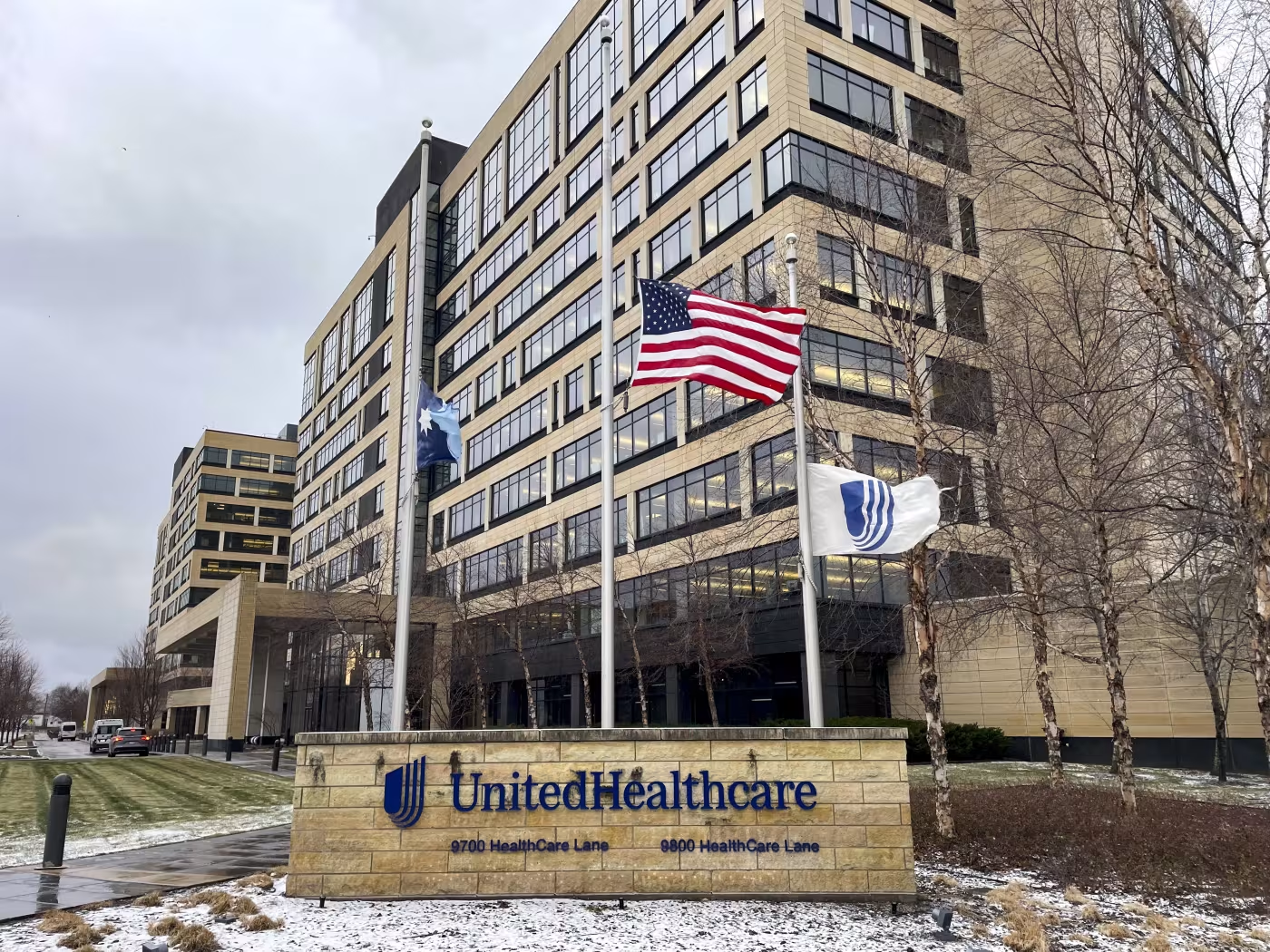Midweek Update

From Washington, DC
- The Wall Street Journal reported this morning
- “A bipartisan group of lawmakers introduced legislation to break up pharmacy-benefit managers, the drug middlemen that have now faced yearslong scrutiny from Congress and the Federal Trade Commission.
- “A Senate bill, sponsored by Sens. Elizabeth Warren (D., Mass.) and Josh Hawley (R., Mo.), would force the companies that own health insurers or pharmacy-benefit managers to divest their pharmacy businesses within three years.
- “A companion bill, which sponsors say draws on a history of government prohibitions on joint ownership within industries, was also introduced in the House on Wednesday.
- “If passed, the legislation would be the most far-reaching intervention yet into the operations of pharmacy-benefit managers, known as PBMs, and their parent companies, cutting off a major source of revenue for the companies and frustration for patients.”
- STAT News added this afternoon,
- “A proposed Senate bill that would prohibit companies that control health insurers or pharmacy benefit managers from owning pharmacies rattled investors on Wednesday, but some Wall Street analysts believe the legislation is unlikely to gain much traction, at least for now.
- “The bipartisan bill, which would require divestiture within three years, is aimed at what the lawmakers call an “inherent conflict of interest” that has forced Americans to pay more for medicines and hastened the demise of independent pharmacies. A companion bill, that refers to a history of government prohibitions on joint ownership within industries, is scheduled to be introduced in the House.” * * *
- Wall Street watchers believe the lower stock prices are an overreaction. Although the insurers are a juicy target, various factors suggest the bill is far from a sure bet, given the upcoming change in administrations. Securities analysts believe other legislative priorities will get more attention, despite a focus on health care matters more broadly.”
- The Wall Street Journal also lets us know,
- “The House voted Wednesday to approve a nearly $900 billion annual defense policy bill that includes a controversial provision that would block some transgender medical care for minors covered by the military’s healthcare program.
- “The package, which sets national defense standards and priorities for the 2025 fiscal year, notably calls for a 14.5% pay raise for junior enlisted service members, dwarfing the 4.5% pay raise included for all other members of the armed forces. The package passed 281-140, with most Republicans voting for the bill but more than half of Democrats voting no.
- “The 1,800-page National Defense Authorization Act would increase the national security budget to $895 billion, about a 1% increase from last year’s total, less than inflation. * * *
- “The NDAA authorizes appropriations but doesn’t provide budget authority, making it a guide to what military spending is ultimately passed separately by Congress. It is set to be the 64th consecutive NDAA successfully passed through Congress—a rarity in what has increasingly become a divided and chaotic legislature.
- “The bill is now expected to be fast-tracked in the Senate, where the chamber will likely pass it before Congress leaves at the end of next week. From there, it would go to President Biden’s desk, where he is expected to sign it.”
- Federal News Network tells us,
- “With just a few weeks left in the year for President Joe Biden to finalize the 2025 federal pay raise, House and Senate Democrats are calling for a larger pay boost than the currently planned raise for civilian federal employees on the General Schedule.
- “In a letter sent to Biden Wednesday morning, a group of 22 Democrats pushed for what they said should be “pay parity” between civilian and military federal employees. Currently, civilian and military personnel are slated for likely different pay raises for 2025.
- “We believe it is imperative you revise your budget to align military and civilian employee pay raises,” the lawmakers, led by Sens. Tim Kaine (D-Va.) and Mark Warner (D-Va.), and Rep. Steny Hoyer (D-Md.), wrote in the letter, shared with Federal News Network.
- “Currently, most civilian employees are on track to receive a 2% federal pay raise beginning in January, according to the alternative pay plan Biden sent to congressional leaders in August. In contrast, military personnel are expected to likely receive a 4.5% raise for 2025. Although the raise amounts appear to be heading in those two directions, neither raise amount is final just yet. Unless Congress or Biden opts for a different pay plan, the 2% raise is expected to become final through signing an executive order by the end of December.”
- The American Hospital Association News informs us,
- The Senate Dec. 10 unanimously passed legislation reauthorizing the Emergency Medical Services for Children Program (H.R. 6960) for an additional five years. The program provides funding for equipment and training to help hospitals and paramedics treat pediatric emergencies. The program was authorized at $24.3 million per year from 2025-2029. The bill was passed by the House in May.”
- and
- “The Department of Health and Human Services Dec. 11 published a final rule implementing provisions related to the Trusted Exchange Framework and Common Agreement. The rule is intended to advance equity, innovation and interoperability by promoting the use and exchange of electronically captured health information as specified in certain provisions of the Health Information Technology for Economic and Clinical Health Act of 2009.
- “The provisions today’s final rule adopts were first proposed in August as part of a much larger rule and will be effective 30 days after it is officially published in the Federal Register.”
- The New York Times relates,
- “In the final days of the Biden administration, the Food and Drug Administration is seeking White House approval to propose a drastic reduction in the amount of nicotine in cigarettes, a longstanding goal of public health experts that has faced stiff opposition from the powerful tobacco lobby.
- “The F.D.A. submitted the proposal to the Office of Management and Budget only on Tuesday, a sign that the move was perhaps more wishful and symbolic than realistic for a White House juggling many late-term agenda items. And traditionally, the budget office’s review of agency proposals can take months.”
- Per Fierce Pharma,
- “As Donald J. Trump gradually fills out his cabinet, the President-elect’s latest pick could bode well for biopharma business development over the next four years.
- “Trump on Tuesday nominated Andrew Ferguson to lead the U.S. Federal Trade Commission (FTC). Ferguson is one of two Senate-confirmed Republican FTC commissioners appointed by President Joe Biden, Reuters notes.
- “At the same time, Trump said in a post on Truth Social that he plans to nominate Mark Meador, a partner at the law firm Kressin Meador Powers, to become an FTC commissioner. Should he be confirmed for the job, Meador will take over the spot currently filled by FTC chair Lina Khan, whose term at the antitrust agency has expired, the news agency said.”
From the public health and medical research front,
- Per MedPage Today,
- “A possible case of H5N1 bird flu virus in a California child has been linked to raw milk consumption and is under investigation by state health officials and the CDC.
- “The patient experienced fever and vomiting after drinking raw milk and has since recovered, according to an announcement by Marin County Public Health. Officials said that the risk to the public remains low, as there was no evidence of person-to person transmission between the child and her family members.
- “The case stands out for being outside the usual farm work setting.”
- The New York Times adds,
- “Domestic cats could provide an unexpected new route for the bird flu virus H5N1 to evolve into a more dangerous form, according to a new study published on Monday.
- “In the year since the virus began circulating in dairy cattle, it has killed many cats, primarily on farms with affected herds. It has also sickened at least 60 people, most of whom had close contact with infected dairy cows or poultry.
- “So far, H5N1 does not spread easily among people, although studies have suggested that just one or two key mutations could allow the virus to make that leap.
- “There is no evidence that cats have spread H5N1 to people and they may not represent a major avenue for the evolution of bird flu, experts said. Still, if a cat were simultaneously infected with H5N1 and a seasonal flu virus, the H5N1 virus could potentially acquire the mutations it needed to spread efficiently among people.”
- ABC News reports,
- “The rates of late-stage breast cancer at diagnosis have risen among women in all racial and ethnic groups, but Black women have been hit the hardest, according to a new study published in the journal Radiology.
- “The study, which looked at data from 2004 to 2021, found that advanced breast cancer rates have risen among women of all ages, with the sharpest increases in young women aged 20 to 39, and women over 75.
- “Black women experience advanced diagnoses 55% more often than white women and are more likely to die from the disease, the study found.
- “While mammography does save lives by catching cancer earlier, fewer than 70% of eligible women are up to date on their screenings, the study found.
- “This trend is particularly alarming because early detection significantly improves survival. Five-year survival rates drop drastically from 99% for early-stage breast cancer to just 31% when the cancer is more advanced and has already spread to other parts of the body, the study found.”
- BioPharma Dive adds,
- “An experimental breast cancer drug developed by Eli Lilly met its main goal in a Phase 3 study, helping people with a form of HER2-negative, ER-positive disease stay alive and progression free for longer than standard hormone-suppressing therapies, according to data disclosed Wednesday.
- “When combined with Lilly’s approved medicine Verezenio, the experimental drug, called imlunestrant, also helped women stay alive and progression free longer than treatment with imlunestrant alone regardless of their mutation status, according to results of the EMBER-3 trial presented at the San Antonio Breast Cancer Symposium. The data were also published in The New England Journal of Medicine.”
- Per a National Institutes of Health press release,
- “National Institute of Health (NIH) scientists have made a significant breakthrough in understanding how “bad” cholesterol, known as low-density lipoprotein-cholesterol or LDL-C, builds up in the body. The researchers were able to show for the first time how the main structural protein of LDL binds to its receptor – a process that starts the clearing of LDL from the blood – and what happens when that process gets impaired.
- “The findings, published in Nature, further the understanding of how LDL contributes to heart disease, the world’s leading cause of death, and could open the door to personalizing LDL-lowering treatments like statins to make them even more effective.
- “LDL is one of the main drivers of cardiovascular disease which kills one person every 33 seconds, so if you want to understand your enemy, you want to know what it looks like,” said Alan Remaley, M.D., Ph.D., co-senior author on the study who runs the Lipoprotein Metabolism Laboratory at NIH’s National Heart, Lung, and Blood Institute.” * * *
- “The study findings could open new avenues to develop targeted therapies aimed at correcting these kinds of dysfunctional interactions caused by mutations. But, as importantly, the researchers said, they could also help people who do not have genetic mutations, but who have high cholesterol and are on statins, which lower LDL by increasing LDLR in cells. By knowing precisely where and how LDLR binds to LDL, the researchers say they may now be able to target those connection points to design new drugs for lowering LDL from the blood.”
- STAT News points out,
- “Gilead said Tuesday that it will soon begin Phase 3 testing for a drug it believes could prevent HIV infection with just a single shot every year.
- “Such a medicine, if proven effective, would be the closest thing to a vaccine the HIV field has produced in four decades of research. The company plans to begin the trial next year, with an eye toward regulatory filings in late 2027.”
From the U.S. healthcare business report,
- Health Affairs reports,
- “Numerous studies show that employer plans pay providers significantly more than Medicare, but less is known about prices in nongroup plans sold both on and off the Marketplaces established by the Affordable Care Act (ACA), where narrow networks and low-cost insurers are more prevalent.
- “We estimated prices for three market segments (Marketplace nongroup, off-Marketplace nongroup, and employer small group) and three types of services (professional, outpatient hospital, and inpatient hospital) relative to a Medicare benchmark.
- “We used 2021 claims data covering virtually all enrollment in ACA risk-adjusted plans. In aggregate, in 2021, Marketplace prices were 152 percent of Medicare prices, whereas the prices paid in small-group employer plans were 179 percent of Medicare prices.
- “Comparing across market segments, relative to employer small-group plans, Marketplace professional prices were 6.9 percent lower, inpatient prices were 13.3 percent lower, and outpatient prices were 26.3 percent lower. Off-Marketplace prices fell between Marketplace and employer small-group prices.
- “The finding that nongroup prices were significantly lower than prices paid by employer small-group plans—more so than indicated by prior research—is important for understanding federal subsidies and affordability for nongroup coverage and evaluating policies such as a nongroup public option with prices capped at a percentage of Medicare prices.”
- Per Healthcare Dive,
- “For the first time in 27 months, Fitch Ratings is revising its credit outlook for the nonprofit hospital sector — lifting it from deteriorating to neutral in its 2025 outlook report and adding that hospitals have made “enough meaningful strides” to warrant the revision.
- “Hospitals have seen “steady improvement” on operating margins, according to the Monday report. The trend is attributable to providers’ success controlling labor expense growth, as well as stronger cash flows and equity returns.
- “Fitch predicts margins will continue to improve, with operators reporting median operating figures between 1% and 2% in 2025. However, if President-elect Donald Trump announces cuts to Medicaid or supplemental Medicaid funds, margins could be adversely impacted and the sector’s outlook may be reverted to deteriorating.”
- Modern Healthcare informs us,
- “Labcorp has completed its acquisition of select non-hospital lab assets from Ballad Health, the independent laboratory company said Wednesday. A purchase price was not immediately available.
- “Johnson City, Tennessee-based Ballad Health will retain operations of its inpatient and emergency department laboratory services, as well as lab services for hospital-based practices, according to a news release.” * * *
- “The latest deal continues a trend of health systems selling off parts of their laboratory business to save on costs and focus on other areas of their operations. Independent lab companies often can provide a higher volume of tests at a lower cost compared with hospitals performing tests at their own facilities.”






